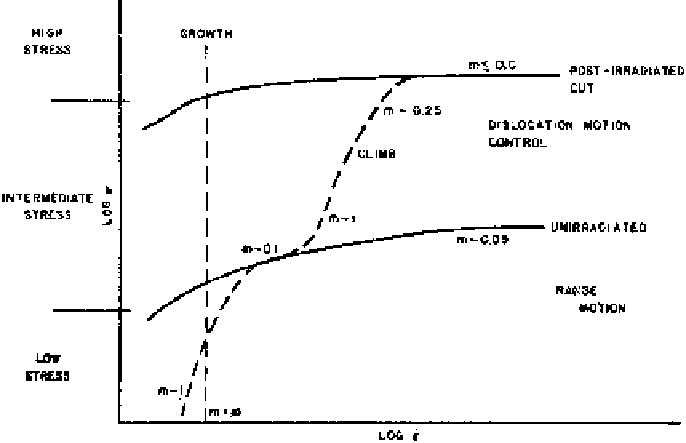Environmental Engineering Reference
In-Depth Information
Figure 9.5
Schematic representation of components of creep in metals before, during,
and following irradiation, Ref. 16.
where
A
applied stress, and
n
is the stress component. The
complex stress dependence of creep rate can be immediately appreciated from
the diagram.
At low fluence, the irradiation creep rate is observed to be proportional to the
damage rate. As the fluence increases, the creep rate increases, as shown in Fig.
9.6 [15].
constant,
σ
9.5.2 Mechanism
A number of mechanisms for radiation-enhanced creep have been suggested.
Whereas some derive the creep strain from a stress-induced preferred condensa-
tion of point defects, others derive it from either climb alone or climb plus glide
of dislocations. The mechanism varies depending on the prevailing stress. At low
stresses (below unirradiated yield), the reduction creep has been suggested to be
primarily due to the formation of point defect loops, preferentially oriented with
respect to the applied stress. Radiation growth is concurrently a contributing fac-
tor. At intermediate stresses, a process of flux-enhanced dislocation climb in se-
ries with glide has been proposed. At high stresses (above postirradiated yield
stress), thermally activated cutting of radiation obstacles as alternative or parallel
means of escaping the obstacles has been suggested [16].

